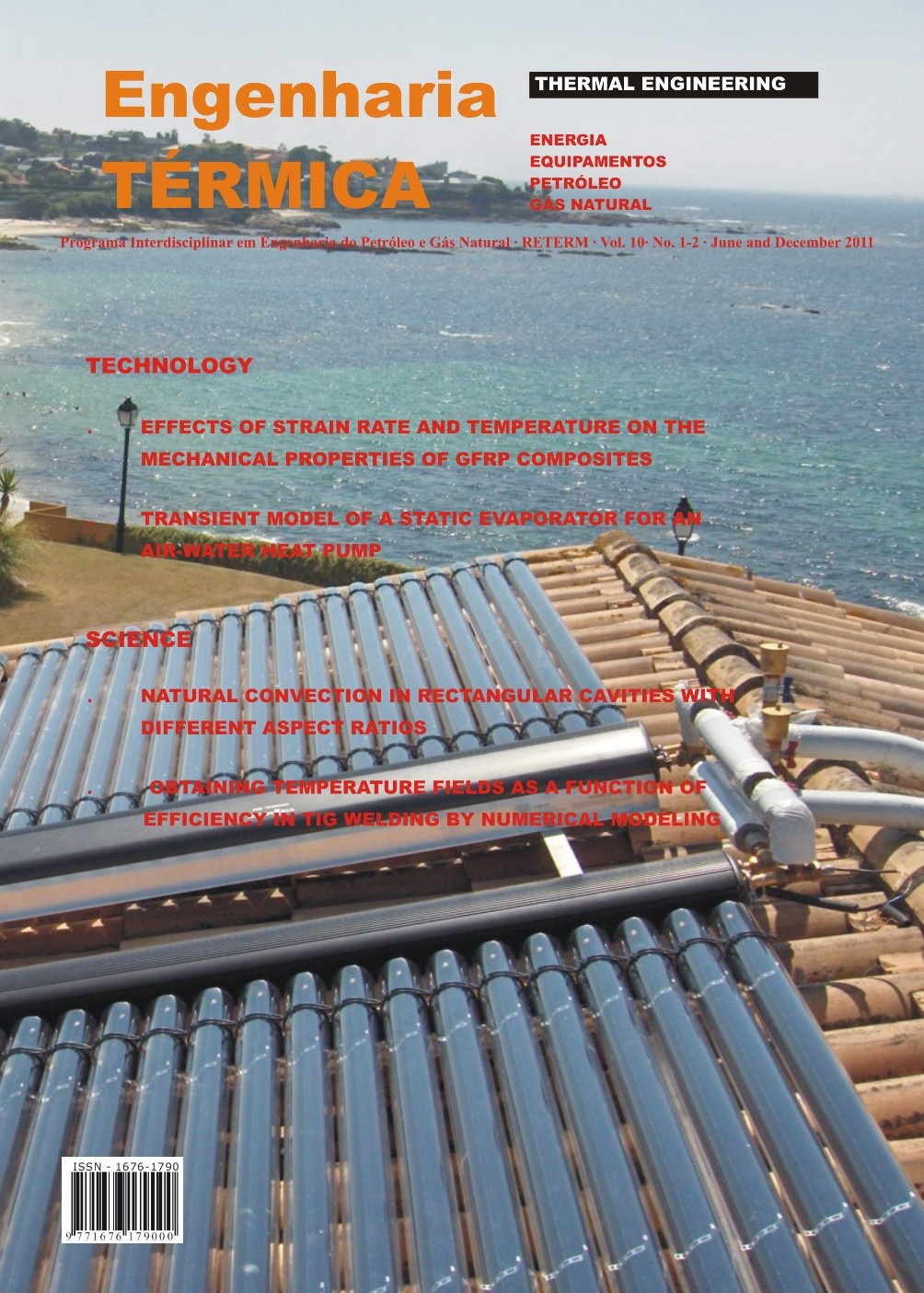SECOND LAW OF THERMODYNAMICS AND HUMAN BODY
DOI:
https://doi.org/10.5380/reterm.v10i1-2.61968Palavras-chave:
human body, exergy destruction, exergy efficiencyResumo
Exergy analysis was applied to assess the energy conversion processes that take place in the human body, aiming at developing correlations of the destroyed exergy and exergy efficiency with the constants of the thermoregulatory system of a human model. Moreover the main concern of the present work was obtaining the exergy behavior of a healthy person. The analysis was applied to a model composed of 15 cylinders with elliptical cross section representing: head, neck, trunk, arms, forearms, hands, thighs, legs, and feet. For each cylinder a combination of the following tissues was considered: skin, fat, muscle, bone, brain, viscera, lung, and heart. From this model it was possible to obtain the energy and exergy transfer to the environment associated with radiation, convection, vaporization and respiration. It was also possible to calculate the energy and exergy variation of the body over time. Results indicate that the energy transfer to the environment is one order of magnitude larger than the exergy transfer and both have different trends. Simulations were carried out for different constants of the thermoregulatory system, and the results that gave the thermal response close to experimental responses of the human body, are in a point near to the minimum exergy destruction and maximum exergy efficiency.
Publicado
Como Citar
Edição
Seção
Licença
Direitos Autorais para artigos publicados nesta revista são do autor, com direitos de primeira publicação para a revista. Em virtude da aparecerem nesta revista de acesso público, os artigos são de uso gratuito, com atribuições próprias, em aplicações educacionais e não-comerciais.


